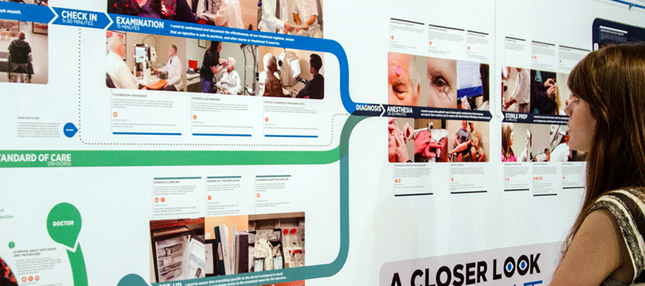 Customer journey mapping is not a concept that smaller businesses tend to think about.
Customer journey mapping is not a concept that smaller businesses tend to think about.
It’s an intimidating prospect to carefully research, document, and analyze specific components of your relationship with a customer, from initial engagement through long-term relationship.
Putting all of that together in a visual map that outlines your typical customer journey may seem even scarier. But taking the time to do this often yields clear insights into opportunities to improve your business and create happier customers.

1. Lay Your Foundation
Start by compiling and re-mining information from customer surveys, website analytics, or call center logs. Using customer data that already exists will help you to define target customer types and segments.
Using the information you’ve collected so far, sketch a draft of what you think the customer journey map might look like for each of your targets. From this rough draft, you may already begin to identify knowledge gaps you have. This is the first step to understanding what you know, what you think you know, and what you clearly are missing.
2. Discover The Truth
Start delving into your customers as much as possible in this step. What are they doing, thinking, and feeling during each step of the process?
You may collect new information during this process to begin filling in gaps, such as one-on-one interviews, observational shadowing, or special mobile or online studies.
3. Prepare The Building Blocks
Now that you have compiled this wealth of data, you’ve got to start managing it. Review your information and start dropping it into a database in a way that will allow you to more easily organize and access it.
During this process, be sure to highlight elements that bubble to the surface or strike you as particularly interesting. Working with physical notecards and whiteboards can be incredibly helpful at this stage since it will give you and your team a shared physical way of interacting with this information.
4. Engage Stakeholders & Co-Create The Map
Get your team involved and begin arranging your information and piecing it together to start building and developing your customer journey map. Work in small groups for best results and work together to find patterns, frame insights, and define actionable next steps. Try to articulate specific customer behaviors, expectations, emotions, pain points, and opportunities.
5. Develop & Share Your Story
Whether privately or publicly, it is important to extend this process beyond your initial small team and get your entire organization involved, regardless of your size. Where are your customers coming from? What are their primary issues? What fuels their buying decisions? The more clearly everyone in your organization understands your customer journey, the better!
This can take the form of rich multimedia media such as websites, mobile apps, or videos. You may also take a more traditional approach and print off infographics, maps, or even massive murals or posters so that no one in your office will miss out. The important thing is to have a clear path to incorporating your customer journey map into your company culture.
6. Create Actionable Tools
Since your business will continue to operate and serve customers, it is critical that your customer journey map becomes an organic part of your operations. Certain key people should have the ability to continuously supplement your findings and edit your map, perhaps the small teams that built the initial map.
As you continue to invest energy and thought into this model and process, it will continue to yield ongoing opportunities for improvement. Perhaps more importantly, this will continue to serve as powerful way to keep your customers’ perspectives at the forefront of the minds of everyone on your team, an accomplishment that sometimes seems increasingly difficult in everyone’s hectic work lives.

